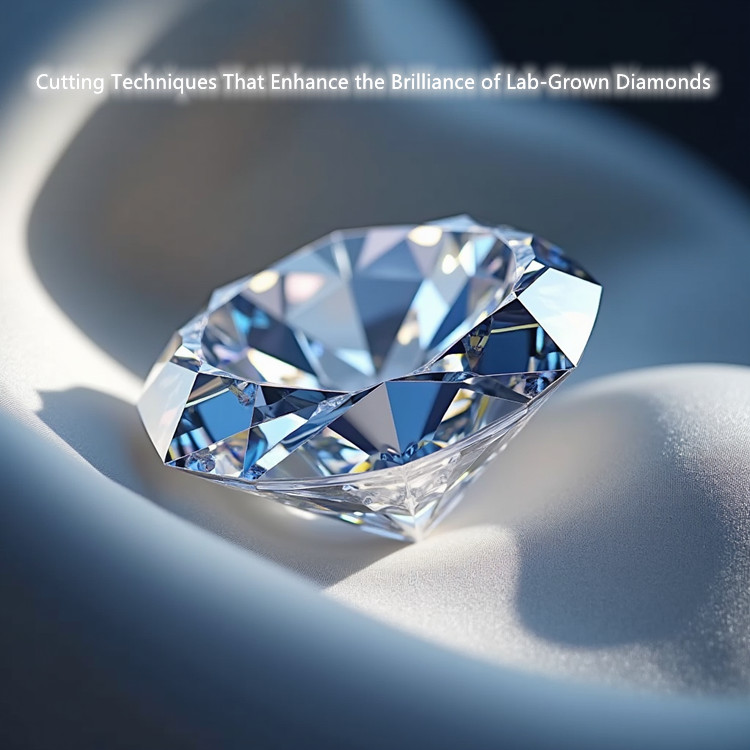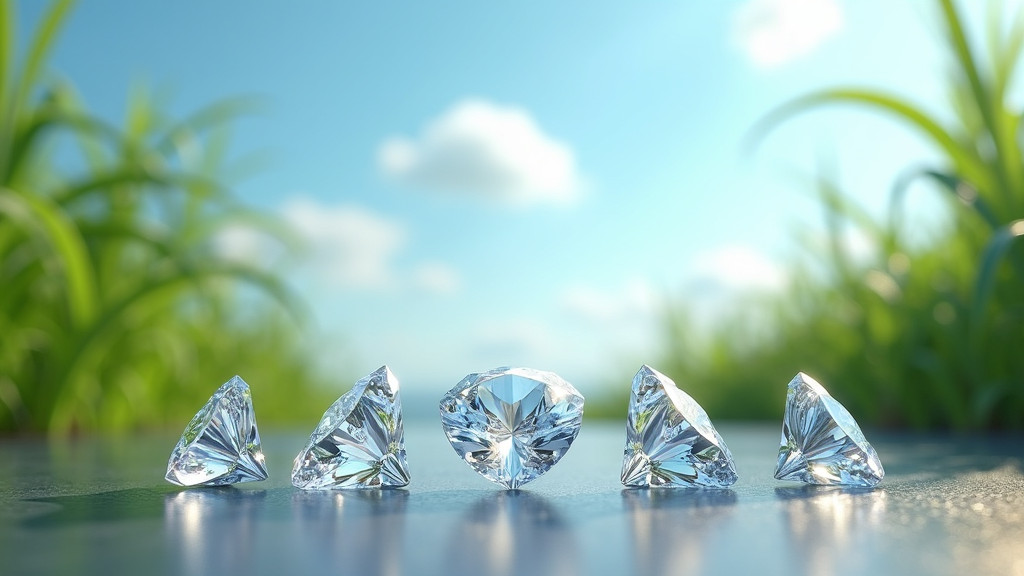
Innovative Technology: Cutting Techniques That Enhance the Brilliance of Lab-Grown Diamonds
In the dazzling world of gems and jewels, diamonds have long been revered for their sparkle and symbolism. As the gem industry evolves, so too do the technologies used to create and perfect these precious stones.
At the forefront of this evolution is the burgeoning field of lab-grown diamonds, which offers not only an ethical and sustainable alternative to mined stones but also a platform for technological advancements that redefine what brilliance truly means.
Here, we explore the cutting-edge techniques in the lab-grown diamond industry that promise to enhance the visual magnificence of these gems and empower designers to craft more artistically expressive pieces.
The Promise of Perfection: Lab-Grown Diamonds and New-Age Cutting Methods
Known for their unparalleled precision and ethical production process, lab-grown diamonds are becoming increasingly popular among consumers who value environmental sustainability and technical excellence.
Unlike mined diamonds, lab-grown diamonds are created under controlled lab environments using two predominant methods: Chemical Vapor Deposition (CVD) and High Pressure High Temperature (HPHT).
These methods ensure consistency in size, clarity, and quality, making them particularly suited to advanced cutting techniques.
Enter new-age cutting techniques that leverage these properties, pushing the boundaries of what diamonds can be. Laser cutting and computer-aided design have revolutionized the process, allowing cutters to work with intricate precision impossible in the past.
This results in facets that capture light in even more dynamic ways, enhancing reflections, refractions, and the trademark “fire” that diamond enthusiasts prize.
Transformative Techniques: Beyond Conventional Cuts
Traditional cutting styles such as the Round Brilliant Cut, Princess Cut, and Emerald Cut have set the standard for modern diamond aesthetics for decades.
However, new-age techniques are transforming these traditional cuts and creating unprecedented possibilities in both appearance and artistry. Techniques like concave faceting and hybrid cuts aim to maximize the potential of each diamond, no matter its size or original shape.
Concave Faceting: By replacing flat facets with concave ones, this method allows light to be refracted and dispersed in spectacular new ways. Light waves enter and bounce within the stone’s interior, creating a kaleidoscopic effect that magnifies brilliance and modifies the spectral output in mesmerizing patterns.
Hybrid Cuts: Drawing inspiration from traditional cuts yet not confined by their limitations, hybrid cuts blend elements of multiple styles to create a unique stone with emphasis on personal expression. These cuts are specially designed to amplify the inherent qualities of lab-grown diamonds, particularly their clarity and symmetry.
Precision Laser Sculpting: Utilizing advancements in laser technology, precision laser sculpting allows for an unprecedented degree of control over the diamond’s surface. This technology yields smoother, refined surfaces and enables designers to experiment with entirely new geometrical configurations.
The Designer’s Palette: Enhanced Expressive Potential
These new cutting techniques do more than simply enhance the inherent sparkle of lab-grown diamonds; they expand the designer's toolkit, opening new avenues for creative expression in jewelry crafting.
Designers are increasingly viewing diamonds not just as mere gemstones, but as core components of imaginative, narrative-driven creations.
Artistic engagement with these techniques enables the creation of statement pieces that speak to personal stories or embody specific themes. The versatility inherent in lab-grown diamonds allows designers to transcend traditional forms and use these gems to create pieces that are both timeless yet refreshingly innovative.
Moreover, the clarity and purity of lab-grown diamonds serve as perfect canvases for modern artistic endeavors. They invite artists and designers to experiment with color, light, and contrast in ways that amplify a piece’s emotive impact.
For example, using advanced cutting methods, designers can create seamless settings that highlight diamonds in conjunction with other materials, such as gold, platinum, or colored gemstones, to tell rich, layered stories that resonate with the wearer.

Sustainability and Innovation: The Eco-Aesthetic Appeal
The allure of lab-grown diamonds is also deeply rooted in their environmental sustainability. With decreased exploitation of natural resources and minimized ecological disruption, these diamonds carry the ethos of conservative luxury—elegance that does not come at the earth's expense. The technological advancements in cutting techniques further this ethos by reducing waste and enhancing efficiency in gem cutting processes.
More than ever, consumers are intrigued by the fusion of tradition and innovation, especially when it aligns with modern values of sustainability and ethical consumption.
This elevated awareness has sparked a renaissance in diamond cutting, where innovation meets artistry, and the shimmer of a jewel is reimagined as part of a sustainable luxury narrative.
Bridging Future Imaginations: A Spectrum of Possibilities
The cutting-edge technologies in the world of lab-grown diamonds symbolize more than advancement in gemology; they manifest the expanded horizon of creativity and ethical luxury.
As we look to the future, these innovations serve as the bridge connecting consumer desires with the industry's commitment to a more sustainable and artistically rich tradition.
Designers, scientists, and gemologists continue to explore the potential of lab-grown diamonds, harnessing technology to amplify artistry and cultivate connections between individuals and the natural world.
The developments in cutting techniques are but one aspect of this fascinating journey, promising to keep the world of diamonds as vibrant and evolving as the gleaming gems themselves.
Through advanced techniques in diamond cutting, we witness how technology not only enhances beauty but also invites a deeper understanding of our relationship with luxury.
With every brilliantly cut surface, lab-grown diamonds invite us to reimagine the aesthetics of the jewels, and indeed, the very essence of beauty in a modern world.











